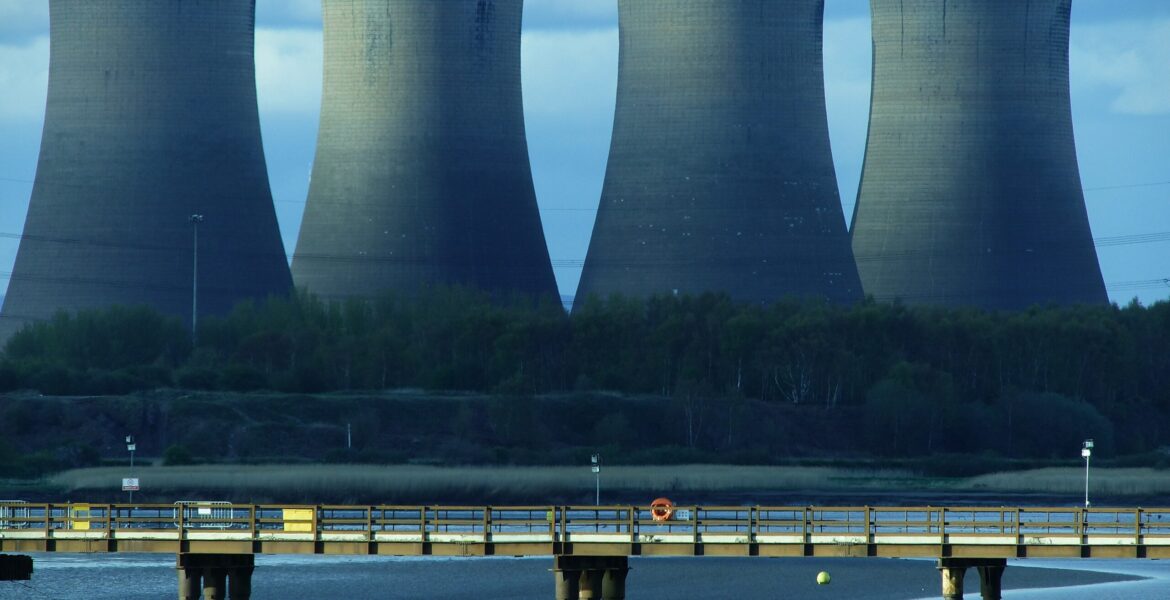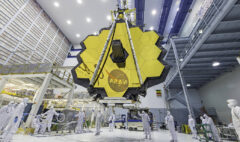Is Nuclear Energy the Best Answer to a Green Future?
Nuclear energy is a very hotly debated topic when it comes to the production of energy. Some would bring up the minimal amount of carbon dioxide (CO2) production. Some would argue about the hazard of nuclear waste produced by such power plants. Let’s take a look and see whether Nuclear Energy is capable of powering a clean future.
To know whether nuclear energy can be the solution to the world’s problem, one would need to know how a nuclear power plant generates energy.
How does nuclear power work?
The simple gist of how a nuclear reactor work is similar in concept to traditional coal-based power plants. Inside the reactor, nuclear elements such as uranium are submerged in water that acts as the coolant and moderator. The uranium would then undergo a fission process where the uranium atoms are split and release energy in the form of heat and radiation.
This newly produced heat would then be used to heat up the surrounding water, turning the water into steam. The steam would then be moved through a turbine, spinning it and generating power.
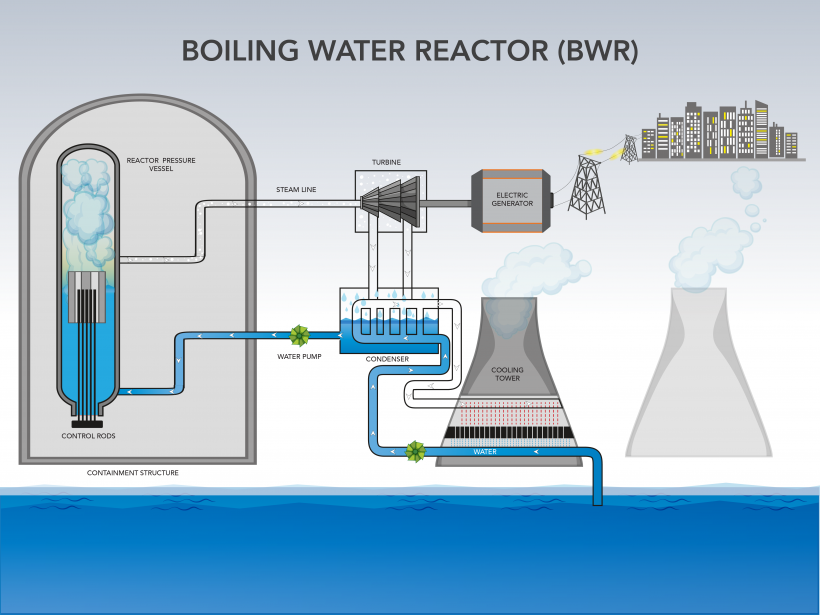
Now that question is answered, let’s answer another. What makes a nuclear power plant green? To answer that, we need to dive deeper into the root of the question and figure out the environmental effect of nuclear reactors.
Environmental Effects from Nuclear Reactors
As mentioned before, the process of energy creation from a nuclear reactor produces steam and hot water. And when the hot water is cooled in cooling towers, water vapour would be produced. That’s what we see floating up at the tall cylindrical building at nuclear power plants. The overall process releases little to no CO2.
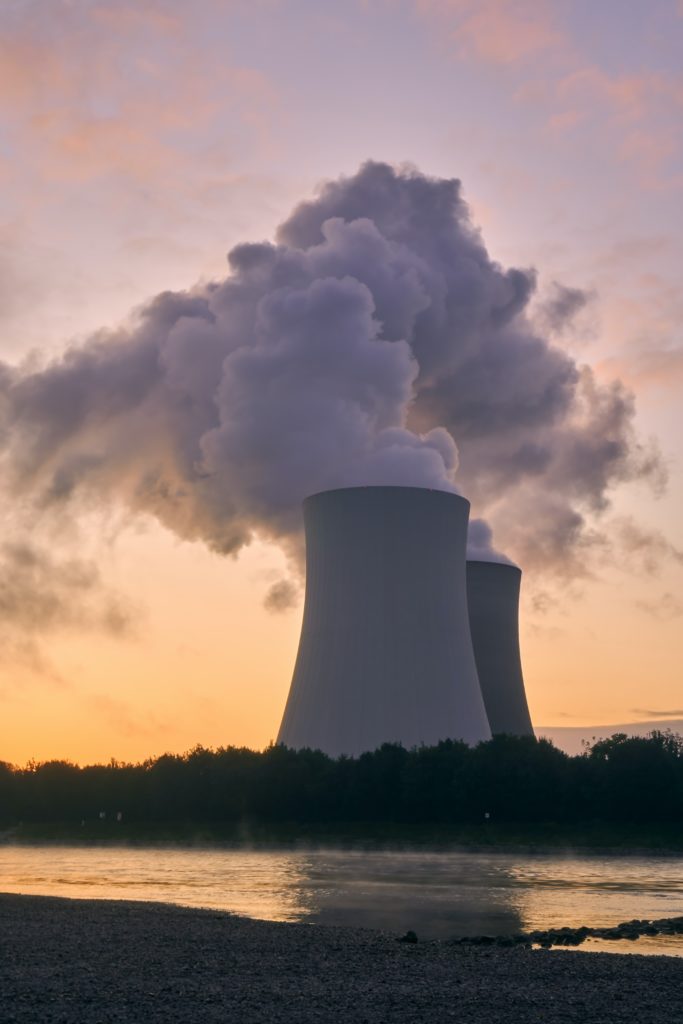
Another concern regarding this process is the hot water from cooling the reactor coolant. The water would usually be released back into their source whether it be a lake or river. This introduction of hot water causes thermal pollution in the body of water. This can cause multiple issues such as algae blooms.
A potential effect of the power plant is the nuclear waste of used nuclear elements. An improper management of the disposal can cause severe effects on the environment of where it is disposed. It can lead to radiation contamination of land or even water reservoir.
These stated are the effect that can be caused by the power plant themselves. Another side of this story is the production of nuclear materials.
Effect from the Production of Nuclear Fuel
The power plant usually takes the spotlight when it comes to discussing the pros as well as the cons of nuclear energy. The process of production usually gets the backseat treatment and overlooked, but that is where the dirt is hidden.
Since every building and construction requires resources and releases a significant amount of pollutants, we’re not going to discuss that in this article. Let’s talk about things that are unique to nuclear energy.
Similar to fossil fuel, mining and excavation are required to acquire radioactive ores such as Uranium. The health risk for uranium ore miners is severely high. The US Public Health Service (PHS) and The National Institute for Occupational Safety and Health (NIOSH) have conducted a series of studies since 1950 on the health of uranium miners. The studies show that the miners are at risk for lung cancer as well as other lung-related diseases.
After the acquisition of the ores, they are then to be refined into proper nuclear fuel. This refining process would produce the most amount of CO2 emission during the lifetime of a nuclear power plant life cycle.
Now that the effects of nuclear power plants have been stated, it doesn’t look as good as first mentioned. But true measurement can only be seen if we compare the effects with other energy sources.
Comparison of Energy Production
To set the foundation, we need to state the CO2 emission of the power plant and compare the numbers to other energy sources.
According to Mark Z. Jacobson, a Professor of Civil and Environmental Engineering at Stanford University, all nuclear power plants produce 4.4 g- CO2e/kWh (CO2 equivalent per kilowatt-hour).
In comparison with other non-renewable energy such as coal and natural gas, the number given by CarbonBrief shows that coal CCS (Carbon capture & storage) and natural gas CCS produces 109g CO2e/kWh and 78g CO2e/kWh respectively. We could see stark differences in the CO2 emission between the different energy sources.
When comparing it to renewable energy like solar and wind, 6g CO2e/kWh and 4g CO2e/kWh respectively (CarbonBrief), we could see that nuclear energy either produces similar or less carbon emission.
Another thing that we should compare is the amount of energy produced per mass by every energy source. In this comparison, we’ll compare how many mega joule (MJ) is produced by 1 kg worth of material or fuel. And for simplicity, we’ll convert MJ to kWh. One kWh equals 3.6 MJ.
- A kilogram of Uranium-233 would produce a whopping 79,420,000 MJ. That equals 2,2061,111.1 kWh/kg.
- A kilogram of Natural Gas would produce 53.6 MJ. That equals 14.9 kWh/kg
- A kilogram of coal would roughly produce 24 MJ. That equals 6.7 kWh/kg
As we could see, it would take an exorbitant amount for both coal and natural gas to equal a kilogram of Uranium-233.
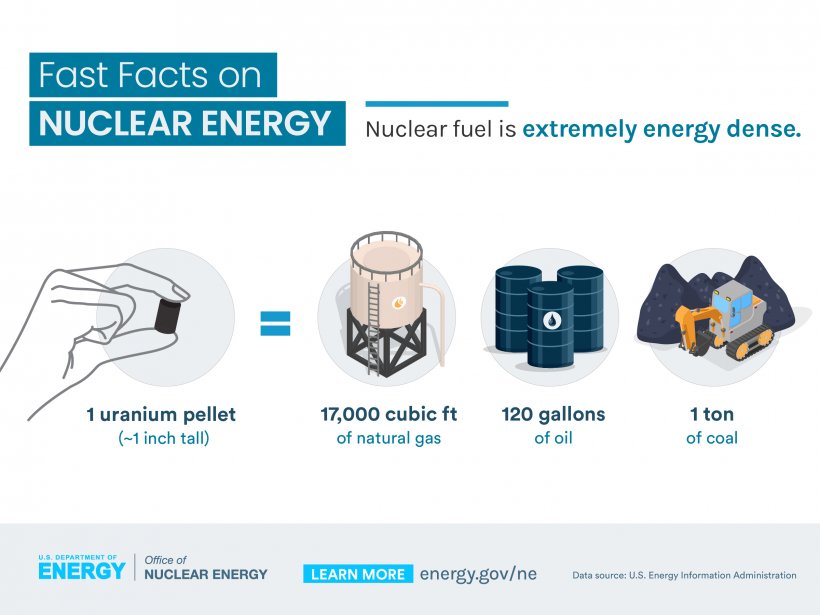
What we can take away from the information is that nuclear energy would produce lesser CO2 than fossil fuels and has the highest energy density than any other energy source. Nuclear energy may be as clean as renewable energy, the fact that it is non-renewable poses a threat of scarcity in the future.
Now that we have seen how nuclear energy is stacked up against other sources of energy, many parts of the world still refuse to consider using nuclear energy. It is understandable because nuclear energy comes with its own unique risk.
Risk of Nuclear Power Plants
There are several good reasons why people would look at nuclear energy with doubts and negativity. The risk of something going wrong with a nuclear power plant would result in cataclysmic destruction and ruins.
One risk that could happen to a nuclear power plant is a nuclear meltdown. The most prominent incidents that happened throughout the existence of nuclear energy are Chernobyl and Fukushima disasters. Both of these disasters were caused by two different things.
The Chernobyl disaster was caused by flawed reactor designs that were then be operated by inadequately trained personnel. The main characteristic of this disaster was a series of human errors.
Meanwhile, the Fukushima disaster was caused by a high magnitude earthquake followed by a 10 to 15-meter-tall tsunami. This string of natural disasters is something that the power plant was not equipped to deal with.
There are other nuclear disasters that happened within the existence of nuclear energy such as the Three Mile Island Nuclear Accident and others. But the similar characteristics that are shared between them are primarily human error followed by natural disasters that are out of anyone’s control. If these issues can be avoided, accidents risk such as those that are mentioned can be lowered greatly.
The feelings of worry and dread can be compared to the worries of planes vs cars as transportation. People that are afraid of flying can be attributed to the horrible disasters and crashes in recent history. But facts would tell otherwise that planes are in fact safer than driving. There are more than 5 million driving-related accidents compared to 20 accidents related to planes.
Other risks that don’t involve the reactor exploding are improper disposal of nuclear waste and the proliferation of nuclear weapons. As mentioned before, improper disposal of nuclear waste can lead to severe environmental risks and hazards. The radiation could leak and contaminate land, food, water reservoir, and even people. Even when proper disposal methods are followed, there are still chances that the waste would leak due to degradation of the materials that the waste is contained in.
The other risk that was mentioned is the proliferation of nuclear weapons. According to Mark Z. Jacobson, there are chances that nations that use nuclear energy would redevelop the uranium ores and technology into weapons.
Conclusion
To not end it on such a grim note, there are countries that are advocating for peaceful usage of nuclear such as Germany and other Non-Proliferation Treaty nations.
To put it in a simple term, nuclear energy is a double-edged sword. If used and maintained appropriately, it would be one of the most efficient sources of energy and cleaner than fossil fuel. On the other hand, they would risk not only the power plant, rather the area within its vicinity. May it be through contamination of radiation or ecological damage from its release of hot water.
To answer the question of this article, we don’t know. Some evidence would suggest that it could power a green future, some would say that they would destroy it.
What do you think about this?
Ahmad Hashri | Degree in German Language and Linguistic, University of Malaya

